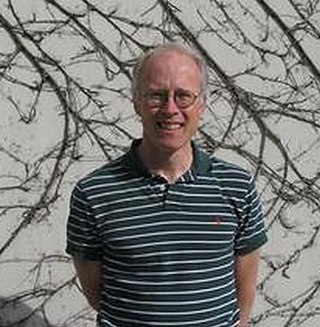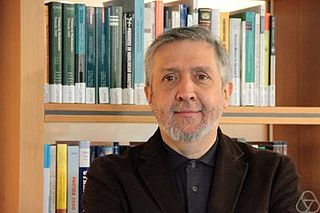
Geometry of numbers is the part of number theory which uses geometry for the study of algebraic numbers. Typically, a ring of algebraic integers is viewed as a lattice in and the study of these lattices provides fundamental information on algebraic numbers. The geometry of numbers was initiated by Hermann Minkowski (1910).

In number theory, the study of Diophantine approximation deals with the approximation of real numbers by rational numbers. It is named after Diophantus of Alexandria.

Carl Ludwig Siegel was a German mathematician specialising in analytic number theory. He is known for, amongst other things, his contributions to the Thue–Siegel–Roth theorem in Diophantine approximation, Siegel's method, Siegel's lemma and the Siegel mass formula for quadratic forms. He was named as one of the most important mathematicians of the 20th century.

Klaus Friedrich Roth was a German-born British mathematician who won the Fields Medal for proving Roth's theorem on the Diophantine approximation of algebraic numbers. He was also a winner of the De Morgan Medal and the Sylvester Medal, and a Fellow of the Royal Society.
In mathematics, Roth's theorem is a fundamental result in diophantine approximation to algebraic numbers. It is of a qualitative type, stating that algebraic numbers cannot have many rational number approximations that are 'very good'. Over half a century, the meaning of very good here was refined by a number of mathematicians, starting with Joseph Liouville in 1844 and continuing with work of Axel Thue (1909), Carl Ludwig Siegel (1921), Freeman Dyson (1947), and Klaus Roth (1955).
John William Scott "Ian" Cassels, FRS was a British mathematician.

Paul Alan Vojta is an American mathematician, known for his work in number theory on Diophantine geometry and Diophantine approximation.

Vojtěch Jarník was a Czech mathematician who worked for many years as a professor and administrator at Charles University, and helped found the Czechoslovak Academy of Sciences. He is the namesake of Jarník's algorithm for minimum spanning trees.
A height function is a function that quantifies the complexity of mathematical objects. In Diophantine geometry, height functions quantify the size of solutions to Diophantine equations and are typically functions from a set of points on algebraic varieties to the real numbers.

József Beck is a Harold H. Martin Professor of Mathematics at Rutgers University.
In mathematics, the subspace theorem says that points of small height in projective space lie in a finite number of hyperplanes. It is a result obtained by Wolfgang M. Schmidt (1972).
In mathematics, specifically in transcendental number theory and Diophantine approximation, Siegel's lemma refers to bounds on the solutions of linear equations obtained by the construction of auxiliary functions. The existence of these polynomials was proven by Axel Thue; Thue's proof used Dirichlet's box principle. Carl Ludwig Siegel published his lemma in 1929. It is a pure existence theorem for a system of linear equations.
Nikolaus Hofreiter was an Austrian mathematician who worked mainly in number theory.

Timothy Browning is a mathematician working in number theory, examining the interface of analytic number theory and Diophantine geometry. Browning is currently a Professor of number theory at the Institute of Science and Technology Austria (ISTA) in Klosterneuburg, Austria.

Manfred Leopold Einsiedler is an Austrian mathematician.

Vladimir Gennadievich Sprindzuk was a Soviet-Belarusian number theorist.
Sergei Aleksandrovich Stepanov is a Russian mathematician, specializing in number theory. He is known for his 1969 proof using elementary methods of the Riemann hypothesis for zeta-functions of hyperelliptic curves over finite fields, first proved by André Weil in 1940–1941 using sophisticated, deep methods in algebraic geometry.

Umberto Zannier is an Italian mathematician, specializing in number theory and Diophantine geometry.

Hans Peter Schlickewei is a German mathematician, specializing in number theory and, in particular, the theory of transcendental numbers.

Robert Franz Tichy is an Austrian mathematician and professor at Graz University of Technology.













